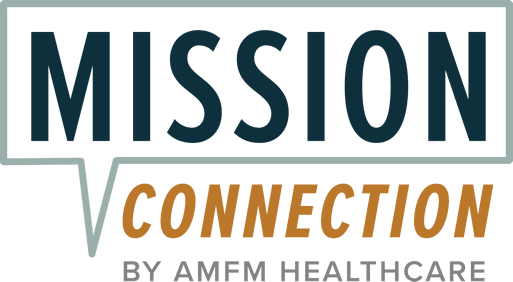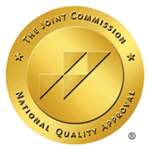What Is Neurofeedback Therapy? And Is It Right for Me?

Imagine if you could teach your brain to feel calmer, focus better, or sleep deeper just like you can train a muscle to grow stronger. Neurofeedback therapy is like a personal trainer for your brain, using real-time feedback to improve mental health. This innovative, highly personalized approach helps individuals gain control over their brain activity. Treatment uses advanced brain imaging and real-time feedback to guide brain waves, offering a science-backed option alongside traditional therapies like medication or counseling.1
Neurofeedback is a growing and complex approach to mental health treatment. Below, we explore how it works, its applications, and how to determine if it might benefit you or members of your family.

What Is Neurofeedback Therapy?
Neurofeedback therapy, sometimes called EEG biofeedback or brainwave biofeedback, uses real-time brain activity to help you learn how to control how your brain works. Its main goal is to change the electrical activity in your brain, which affects how you feel and behave.2
Unlike traditional therapies that focus on altering your thoughts or behaviors through conversation or medication, neurofeedback uses special imaging tools like EEG (electroencephalography) and fMRI (functional magnetic resonance imaging) to show how your brain is working in the current moment.2
This approach is non-invasive, which means it doesn’t use medicine or surgery. Instead, small sensors are placed on your head to measure your brain waves, and as a result, you get feedback through sounds and pictures, which can be assessed. For example, you might watch a movie that plays smoothly when your brain waves are balanced but pauses when they drift into unhelpful patterns.
More than 700 studies have shown that neurofeedback can help with a wide variety of mental health conditions from ADHD to insomnia. As such, more scientists are starting to support and trust this type of therapy.3
How Does Neurofeedback Therapy Work?
Brain waves have two main features: amplitude (how strong they are) and frequency (how fast they move). Neurofeedback works by measuring brain activity using small sensors called electrodes, which are placed on specific areas of your head. These sensors pick up patterns in your brain waves, allowing mental health practitioners to focus on the areas linked to certain mental health conditions.1
For example, studies show people with ADHD often have elevated levels of slow brain waves that make it hard to focus, and fewer fast waves, which affects their attention. Neurofeedback ADHD treatment focuses on lowering the slow waves (called theta waves) and boosting the fast waves (called beta waves). This helps create a better balance, making it easier to pay attention and stay calm.
One of the key benefits of neurofeedback is that it gives feedback right away. When your brain makes helpful patterns, you get a reward, like a calming sound or a video that plays smoothly. When your brain waves go off track, the reward stops or changes, gently helping your brain get back on track. Over time, your brain learns better patterns through practice.2 Just like building muscles or physical endurance, this training requires consistency. For example, sleep problems are often treated with three 45-minute sessions each week for almost two months.4
What Is the Downside of Neurofeedback?
Neurofeedback Side Effects
Unlike medication, neurofeedback doesn’t usually cause side effects like weight gain, stomach problems, or feelings of emotional numbness. Because it’s non-invasive (meaning it doesn’t enter the body), the risks are low, and it can be used safely for long-term use. In studies focused on PTSD, only three of 17 trials reported any problems – and they were all small and temporary.5 Most people say their sessions feel calm and relaxing, with no pain afterward.
Cost of Neurofeedback Therapy
Is Neurofeedback Therapy Right for Me?
Neurofeedback can help people whose brain activity makes them feel restless or have racing thoughts – especially at bedtime. Because it’s based on your unique brain patterns, it fits well with the idea of personalized medicine, which means creating treatments just for you. Below are some common conditions that may improve with neurofeedback.
Neurofeedback for ADHD
Neurofeedback is one of the most studied tools for ADHD. It helps improve focus and lower impulsive behavior by balancing brain activity. The therapy targets the top of the head to reduce slow “daydreaming” waves and boost “focus” waves.1
This can be a helpful choice for people who don’t want to rely on ADHD medications, which can have side effects. Years of research show that neurofeedback helps both kids and adults with ADHD. Adults may notice changes after about 20 sessions, while kids often need 30-40. The best providers will start by making a brain map (called a QEEG) to plan treatment based on your brain’s patterns.
Neurofeedback for Depression & Anxiety
Neurofeedback helps calm brain areas that are too active or too quiet in people with depression and anxiety. Sessions of neurofeedback for depression focus on boosting activity in the front part of your brain, which is often underactive in people struggling with mood. Neurofeedback for anxiety targets fast brain waves and trains your brain to produce more calming waves.6
In one study, 78% of participants with severe depression felt better after an average of 20 neurofeedback sessions. Another study investigating neurofeedback training for anxiety found that patients reported lasting relief even 18 months after treatment.6 When seeking a neurofeedback provider for depression or anxiety treatment, consider focusing on options that pair neurofeedback training with traditional therapy. It will also be important to be prepared to talk about your struggles and symptoms to tailor treatment to your specific challenges.
Neurofeedback for Post-Traumatic Stress Disorder
Neurofeedback strengthens the brain’s ability to manage fear and process tough memories, making it useful for addressing post-traumatic stress disorder (PTSD) symptoms. The therapy works on the areas of the brain that control emotions, like the prefrontal cortex and amygdala. This treatment can lower symptoms like flashbacks, nightmares, and hypervigilance associated with PTSD.5
A number of studies used treatment plans with 30-45 minute sessions, two or three times a week. In one study, Vietnam veterans who got neurofeedback were 80% less likely to have PTSD symptoms return. Many also needed fewer medications, and so were less dependent on these.5 If you’re thinking about this form of therapy for PTSD, know that trauma can take time to heal. Be ready to commit to at least 30 sessions to get the most benefit.
Neurofeedback for Sleep Disorders
If you struggle to sleep because your mind won’t slow down, neurofeedback might help. People with insomnia often have too many beta waves at night, which can make them feel too alert to fall asleep. Neurofeedback teaches the brain to quiet these waves, leading to better, deeper, and more restorative sleep.4
One study found that neurofeedback therapy outperformed cognitive behavioral therapy in improving sleep quality and reducing the severity of insomnia. A typical treatment protocol of neurofeedback for sleep disorders involves 20 sessions over 6-8 weeks.4 Given the focus on re-establishing healthy sleep-wake patterns, finding a provider and schedule that can accommodate consistent timing of sessions is particularly important when using neurofeedback to treat sleep disturbances.
Neurofeedback Practitioner Near Me
To get the best results with neurofeedback, it’s important to work with a trained professional. Look for someone certified with trusted groups like the Biofeedback Certification International Alliance (BCIA) and who has experience with your specific condition.
If you’re ready to take the next step, Mission Connection is here to help. We offer many levels of mental health support, including inpatient care, outpatient programs, intensive outpatient services, and virtual therapy – so you can find the right fit for your needs.
What’s more, neurofeedback is just one of the innovative treatments we provide. You might also be interested in transcranial magnetic stimulation (TMS), which is another non-invasive treatment that uses gentle magnetic pulses to improve brain function. You can learn more about all of our innovative treatments here, or explore TMS in more detail here.
Want to see how neurofeedback and other therapies can support your mental health? Contact Mission Connection at 866-730-4598 today to schedule a consultation and find a path that helps your brain, and your whole self, feel better.

References
- Marzbani, H., Marateb, H. R., & Mansourian, M. (2016). Neurofeedback: A comprehensive review on system design, methodology and clinical applications. Basic and Clinical Neuroscience, 7(2), 143-158. http://dx.doi.org/10.15412/J.BCN.03070208
- Wider, W., Maniam, J., Chew, B., Paruk, N., Feroz, M., Usun, L., & Jalaludin, L. (2024). Mapping the evolution of neurofeedback research: A bibliometric analysis of trends and future directions. Frontiers in Human Neuroscience, 18, Article 1339444. https://doi.org/10.3389/fnhum.2024.1339444
- Norris, W. K., Allison, M. K., Fisher, S., & Curran, G. M. (2024). Implementation science application to EEG neurofeedback research: A call to action. NeuroRegulation, 11(2), 211-218. https://doi.org/10.15540/nr.11.2.211
- Basiri, N., Khayyer, Z., Hadianfard, H., & Ghaderi, A. (2017). Comparison of the effectiveness of cognitive behavioral therapy and neurofeedback: Reducing insomnia symptoms. Global Journal of Health Science, 9(7), 35-42. https://doi.org/10.5539/gjhs.v9n7p35
- Vijay, J., Mehler, M., & Torres, A. (2024). Systematic review and meta-analysis of neurofeedback and its effect on posttraumatic stress disorder. Frontiers in Psychiatry, 15, Article 1323485. https://doi.org/10.3389/fpsyt.2024.1323485
- Hammond, D. C. (2005). Neurofeedback treatment of depression and anxiety. Journal of Adult Development, 12(2-3), 131-137. https://doi.org/10.1007/s10804-005-7029-5





